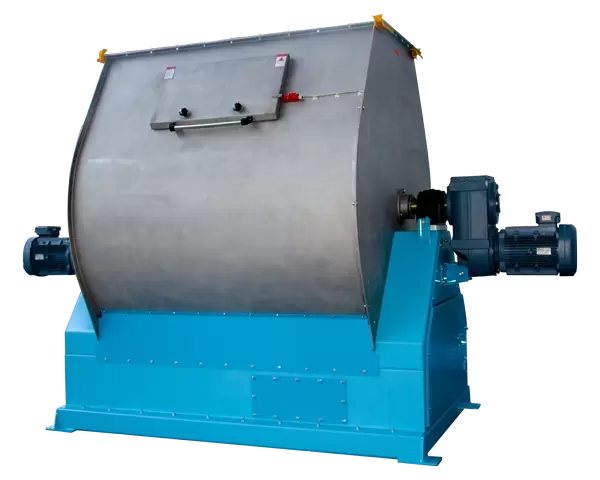In modern animal husbandry, feed mixer is one of the indispensable equipment. It not only improves the efficiency of feed preparation, but also ensures the uniformity and nutritional balance of feed. There are many types of feed mixers, each of which has its own unique characteristics and scope of application. This article will introduce the main types of feed mixers in detail.
Vertical feed mixers usually have a vertical mixing drum with rotating mixing blades inside. This design enables the feed to be flipped up and down during the mixing process to achieve full mixing. It is suitable for small farms or family farming and is favored for its small size and easy mobility. At the same time, it is also suitable for mixing various dry and wet feeds and additives.
The mixing drum of the horizontal feed mixer is placed horizontally and is also equipped with rotating mixing blades inside. Compared with the vertical mixer, the horizontal mixer has a larger capacity and is suitable for large-scale production. It is widely used in commercial feed mills and large farms, especially for processing large amounts of grains and roughage. Its efficient mixing capacity ensures the uniformity and quality of the feed.
The feed is mixed horizontally in the horizontal mixer by rotating blades. The blade design usually ensures that the feed does not accumulate on the barrel wall during the mixing process, thereby improving the mixing efficiency.
The double-shaft feed mixer uses two parallel rotating shafts, each equipped with multiple mixing blades. This design provides stronger stirring force and higher mixing speed.
In a double-shaft mixer, the two rotating shafts rotate in opposite directions, so that the feed can be fully mixed in both directions. This two-way mixing ensures the thorough integration of the feed ingredients.
Double-shaft mixers are suitable for occasions requiring high mixing accuracy, such as the production of special animal feeds or feed processing with strict requirements on mixing uniformity.

The core component of the spiral feed mixer is one or more screw conveyors, which convey the feed along a fixed path and mix it during the conveying process.
The feed moves forward under the push of the screw conveyor, and due to the special design of the spiral blades, the feed is mixed radially and axially during the conveying process.
The spiral mixer is suitable for feed mixing on continuous production lines, especially for mixing powdered and granular feeds. Its high efficiency and continuity make it an ideal choice for industrial production.
The paddle feed mixer has multiple fixed-angle paddles installed in the mixing drum, which shear and flip the feed when the mixing drum rotates. When the mixing drum rotates, the paddles strongly shear and flip the feed, so that the feed can be highly mixed in a short time.
Paddle mixers are suitable for occasions where rapid mixing is required, such as the production of premixes and time-sensitive feed processing.
The horizontal mixer is a larger feed mixing equipment. Its working principle is to mix the feed by rotating the mixing blades and moving the feed raw materials. The horizontal mixer is characterized by good mixing effect and can mix a variety of feed raw materials. It is suitable for large-scale farms. The horizontal mixer has a large capacity and can mix a large amount of feed at a time, which can meet the needs of large-scale farms.
There are many types of feed mixers. Different types of feed mixers have different characteristics and application ranges. Farmers and farms can choose the appropriate type and specification of feed mixer according to their own needs to improve the uniformity and quality of feed and improve breeding efficiency.
As a feed mixer company, we are committed to providing high-quality and efficient feed mixing solutions. Our mixers are suitable for farms and feed mills of all sizes, and can handle a variety of raw materials to ensure uniform mixing and nutritional balance of feed. We continue to develop innovative technologies to meet the evolving needs of the livestock industry and contribute to the sustainable development of the livestock industry.